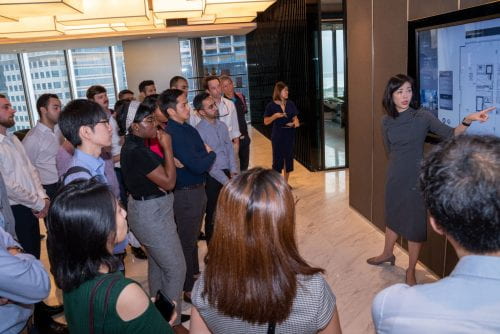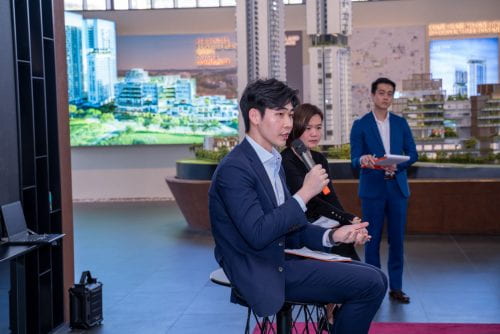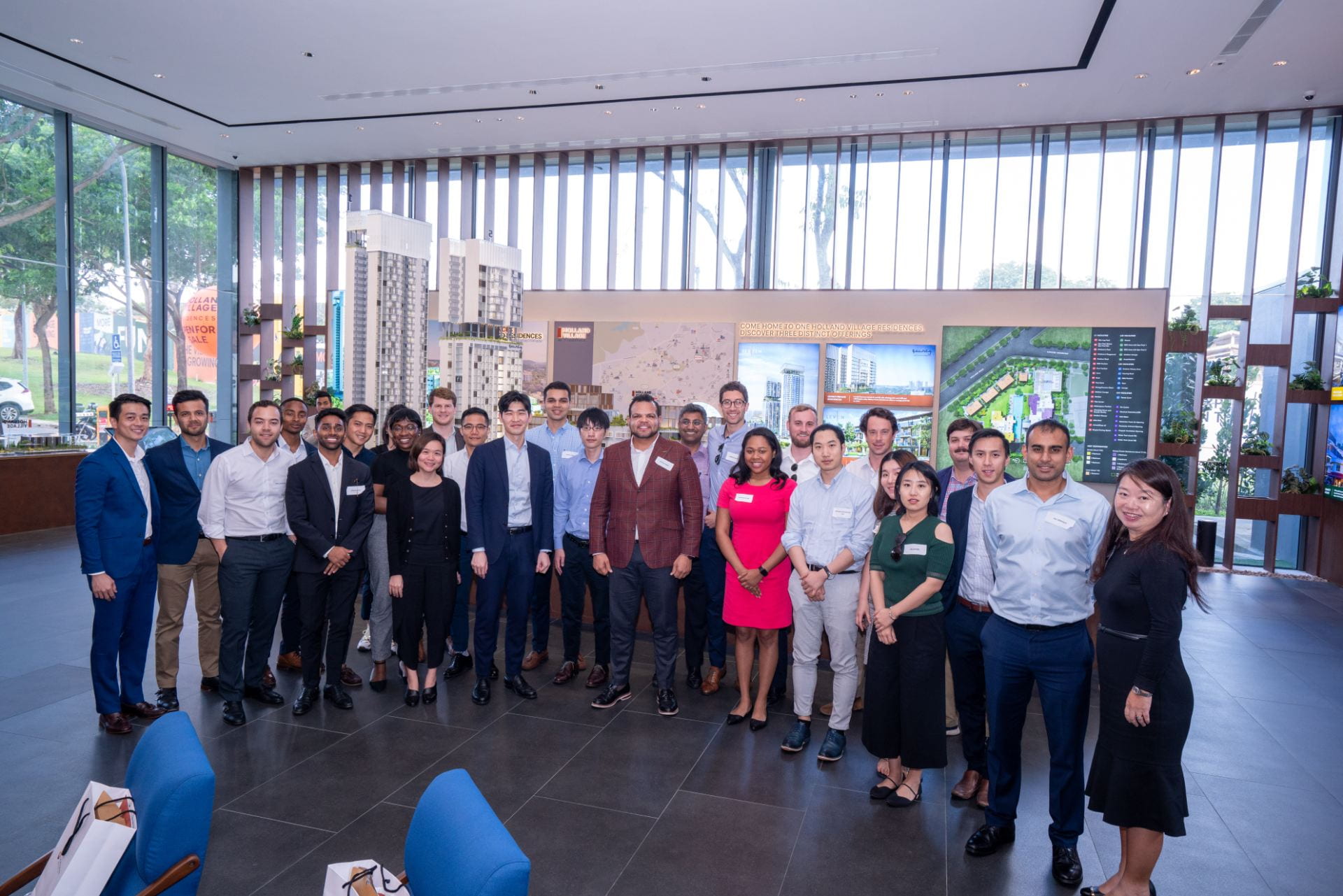
Day 4 of the trek saw Baker students begin the morning with an in-depth tour of Singapore’s tallest building, Guoco Tower. First opened in 2017, the tower was developed by GuocoLand, one of Asia’s premier luxury developers. In addition to its location above the Tanjong Pagar MRT station, the property, known in Singapore as an “integrated development,” consists of over 100,000 square feet of retail and dining space, 890,000 square feet of office space, a 223 room five-star Sofitel Hotel, and the 181-unit Wallich Residences. British billionaire James Dyson made headlines recently for the purchase of the super-premium penthouse on the top floor of the property for US$54 million.

Valerie Wong, General Manager of Commercial Assets at GuocoLand, walked students through a scale model of the development prior to the tour. The design is a product of the world-renowned architectural firm Skidmore, Owings, & Merrill, which has completed projects such as the Time Warner Center in New York City, the Burj Khalifa in Dubai, and the Polestar Tower in Sweden. Ms. Wong then answered students’ questions about the challenges and complications of the development. Located in a historic district and above an operating subway line, construction had to be carried out incredibly carefully to address the needs of both commuters and local residents. The project’s geotechnical firm, ARUP Singapore Pte Ltd, received the 2019 Geotechnical Engineering Award for their excellence in managing the phased construction of such a complex project.
Students then went on a tour of the retail, office, and hotel properties, getting an inside look at Sofitel’s unique room designs and guest and meeting areas before proceeding the Wallich Residences. The residences are among the most expensive in Singapore and comprise floors 39 to 64 directly above the office space. Amenities are spread out over four different floors, with a concierge service and infinity pool on floor 39, a private library and theatre or floor 52, and a glass cantilevered observation deck on floor 62. Students were able to walk through one unit currently on the market for S$10 million and were impressed with the finishes and panoramic views of Downtown Singapore and the coast.
After lunch, Baker students ventured into the Holland Village area for a meeting with the Far East Organization. Owned by the Ng family, one of Singapore’s wealthiest, the company is the largest private property developer in Singapore, having developed over 750 properties across the country since its founding in 1960. In 2018, the company led a consortium that was successful in acquiring the development rights to a highly sought-after land site in Holland Village for S$1.21 billion. The consortium has plans for a S$1.8 billion integrated development that will have two towers of 33 and 25 stories. The two towers will house over 400 apartments, a 10-story serviced apartment tower, and five levels consisting of approximately 80,000 square feet of office space situated above an additional 145,000 square feet of retail space. The project is yet another example of Singapore’s unique ability to foster transit-oriented development that offers live-work-play components in areas that need more of such uses. Developers, with the support of the government’s able central planning, have embraced the types of mixed-use projects that have been slower to catch-on in other areas. The result has been a responsible increase in the density of key areas around the country. As urban cores continue to densify, the importance of these kinds of developments providing a balance of uses and open space will substantially increase.

The students were excited to have a chance to sit down for a one-on-one conversation with Jonathan Ng, grandson of the company’s founder and currently Executive Director, CEO’s Office. Jonathan graciously answered student questions about the challenges of private development in Singapore. The Holland Village site, due to its varying usages, was awarded a 99-year ground lease by the Singaporean Government, a major advantage not always enjoyed. One key difference in how developers in Singapore seem to approach value differently than a typical U.S. investor is the concept of reversion. In general, in the U.S. an investor expects to receive a large portion of their return upon the sale of an asset. The existence of the ground lease, which in some cases can be for as little as 30-45 years, forces developers to view this potential reversion as a zero-sum game. Therefore, in pricing the value of bids at government auctions companies must ensure that they are achieving target returns through income alone, with the assumption that the reversionary interest in the property will be discounted, and eventually be zero. For companies such as the Far East Organization, Ng indicated, this is not a major problem as they are extremely long-term, if not indefinite, holders of assets and therefore they usually are able to achieve these types of returns. Students concluded the visit with a networking reception set against the backdrop of the various full-scale models of for-sale apartments – which since going on the market in December of 2019 have sold approximately 50%.

